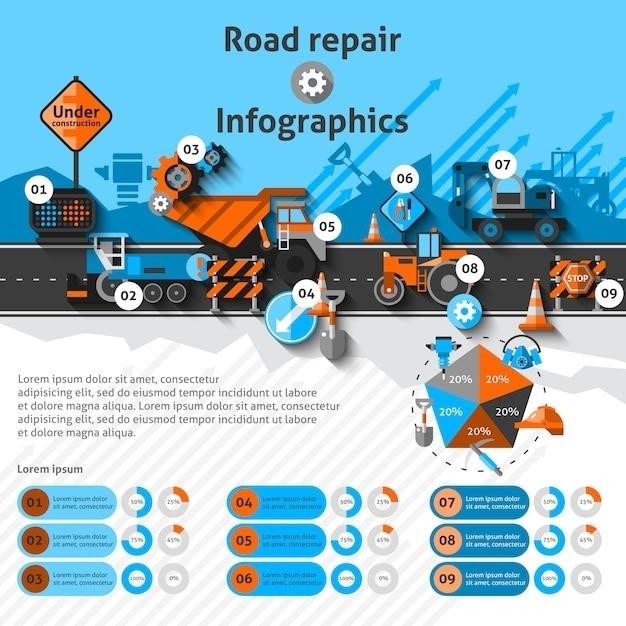Yates Bindii & Clover Killer⁚ A Comprehensive Guide
This guide provides a complete overview of Yates Bindii & Clover Killer‚ including its application‚ suitable lawn types‚ safety precautions‚ and dealing with resistant weeds. Learn about effective weed control‚ active ingredients‚ environmental considerations‚ and frequently asked questions. Find out where to purchase this popular herbicide.
Product Overview and Target Weeds
Yates Bindii & Clover Killer is a selective herbicide designed for effective control of various broadleaf weeds commonly found in lawns. This product is particularly effective against bindii and clover‚ two prevalent lawn invaders notorious for their prickly seed heads and persistent nature. Beyond bindii and clover‚ Yates Bindii & Clover Killer targets other broadleaf weeds‚ including dandelions‚ catsear‚ cudweed‚ plantains‚ and creeping oxalis‚ offering comprehensive weed management for a healthier lawn; The formulation ensures that the desired grass remains unharmed‚ promoting a lush‚ weed-free appearance. However‚ it’s crucial to note that this product is not suitable for all lawn types‚ particularly buffalo grass. Always check the product label for a complete list of target weeds and compatible grass types before application. Understanding the specific weeds present in your lawn is crucial for successful weed control with this product‚ ensuring optimal results and a well-maintained lawn.
Effective Weed Control⁚ Bindii‚ Clover‚ and More
Yates Bindii & Clover Killer employs a combination of selective herbicides‚ targeting broadleaf weeds while leaving desirable grasses unharmed. The active ingredients‚ MCPA and Dicamba‚ are absorbed through the leaves and transported throughout the weed’s root system‚ leading to its demise. This systemic action ensures effective control even of deeply rooted weeds like clover. For optimal results‚ apply the herbicide when weeds are actively growing‚ and avoid application during periods of expected rain. Early intervention is key‚ especially with bindii‚ aiming for treatment before seedhead formation to prevent further spread. Persistent weeds such as clover might require a follow-up application after 3-4 weeks to eliminate any surviving root systems or residual seeds. Remember that some weed seeds‚ including bindii‚ can remain viable in the soil for up to five years‚ necessitating consistent management. The effectiveness of Yates Bindii & Clover Killer depends on proper application and timing‚ ensuring a healthy and weed-free lawn.
Application Instructions and Timing
Before applying Yates Bindii & Clover Killer‚ carefully read the product label for specific instructions and safety precautions. Measure your lawn area accurately to determine the required amount of herbicide. Ensure the weeds are actively growing for optimal absorption and effectiveness. Avoid applying when rain is expected‚ as this could dilute the product and reduce its efficacy. Apply the product evenly across the lawn‚ taking care to cover all affected areas. For best results‚ use a suitable sprayer to ensure even distribution. Do not mow the lawn for seven days before or after application to allow the herbicide to fully penetrate the weeds. For advanced weeds or persistent clover‚ repeat applications might be necessary after three to four weeks. Always follow the manufacturer’s instructions regarding dilution rates and application methods. Remember to wear appropriate personal protective equipment (PPE) during application‚ including gloves and eye protection. Improper application may result in reduced weed control or damage to desirable grasses. Consult the product label for detailed guidance specific to your lawn type and weed infestation.
Suitable and Unsuitable Lawn Types
Yates Bindii & Clover Killer is formulated for use on a variety of common lawn types‚ effectively targeting broadleaf weeds while leaving desirable grasses unharmed. It’s suitable for use on Kikuyu‚ Couch‚ and other common grasses. However‚ it’s crucial to note that this product is not suitable for all lawn types. Specifically‚ avoid using Yates Bindii & Clover Killer on Buffalo grass lawns‚ as it may cause damage or harm to this specific grass species. Additionally‚ it’s not recommended for use on new lawns less than three months old‚ as these lawns are still establishing themselves and may be more susceptible to herbicide damage. Other unsuitable lawn types include Lippia‚ Dichondra‚ Strawberry Clover‚ and Durban grass lawns. Before application‚ carefully examine the product label to confirm compatibility with your specific lawn type. Using this product on unsuitable lawns could result in unintended consequences‚ including damage to the grass and reduced effectiveness against weeds. Always prioritize the correct selection of herbicide to ensure the health and vitality of your lawn.
Safety Precautions and PPE
When using Yates Bindii & Clover Killer‚ prioritize safety by following all instructions on the product label meticulously. Before commencing application‚ always wear appropriate Personal Protective Equipment (PPE). This includes protective gloves to prevent skin contact with the herbicide‚ as well as eye protection (safety glasses or goggles) to shield your eyes from accidental splashes. Long sleeves and long pants are also recommended to minimize skin exposure. Ensure adequate ventilation during application‚ especially in enclosed areas or when using a sprayer. Avoid spraying on windy days‚ as this can lead to drift and unintended exposure to yourself‚ pets‚ or nearby plants. Keep children and pets away from the treated area until the product has dried completely. After application‚ wash your hands thoroughly with soap and water to remove any residual herbicide. If accidental skin contact occurs‚ immediately wash the affected area with plenty of soap and water. If the product gets into your eyes‚ rinse them thoroughly with clean water for several minutes and seek medical attention if irritation persists. Store the product in its original container‚ securely sealed‚ and out of reach of children and pets. Refer to the Safety Data Sheet (SDS) for comprehensive safety information.
Dealing with Resistant Weeds and Follow-Up Applications
Some weeds‚ particularly established clover and bindii‚ may exhibit resistance to a single application of Yates Bindii & Clover Killer. Several factors contribute to this‚ including the age and size of the weeds‚ the environmental conditions at the time of application (e.g.‚ temperature‚ rainfall)‚ and the presence of residual weed seeds in the soil. For persistent weeds‚ a follow-up application is often necessary. The product label will specify the recommended waiting period before a repeat treatment. Typically‚ this is 3-4 weeks after the initial application. Before reapplication‚ assess the effectiveness of the previous treatment. If significant weed control hasn’t been achieved‚ consider alternative weed management strategies‚ such as hand-weeding or employing a different herbicide with a different mode of action. Remember that regular lawn maintenance practices‚ such as proper mowing and fertilization‚ can help prevent weed infestations in the long term. Always read and follow the label instructions carefully before applying any herbicide‚ including for repeat applications. Improper use can damage your lawn or lead to environmental problems. Consistent monitoring and proactive weed control are key to maintaining a healthy and weed-free lawn.
Understanding the Active Ingredients
Yates Bindii & Clover Killer’s effectiveness stems from a combination of carefully selected herbicides. While the precise formulation may vary slightly depending on the specific product and its concentration‚ the active ingredients typically include MCPA and Dicamba. MCPA (2-methyl-4-chlorophenoxyacetic acid) is a selective herbicide primarily affecting broadleaf weeds. It disrupts their growth hormones‚ leading to their eventual death. Dicamba (3‚6-dichloro-2-methoxybenzoic acid) is another selective herbicide with a similar mechanism of action‚ providing a broader spectrum of weed control and enhancing the overall efficacy of the product. These two active ingredients work synergistically‚ targeting various broadleaf weeds like bindii‚ clover‚ dandelions‚ and others‚ while generally sparing the desired grasses in your lawn. The specific concentrations of MCPA and Dicamba are detailed on the product label. Always read the label carefully before use to understand the complete composition and any potential hazards associated with the specific formulation you are using. This ensures safe and effective weed control.
Environmental Considerations and Responsible Use
Responsible use of Yates Bindii & Clover Killer is crucial for minimizing environmental impact. Avoid over-application‚ carefully following label instructions regarding dosage and application rates. This prevents herbicide runoff into waterways‚ protecting aquatic life. Apply the product only when necessary‚ targeting actively growing weeds for maximum effectiveness and reducing the need for repeated treatments. Wind conditions should be considered; avoid application on windy days to minimize drift onto non-target areas‚ such as gardens or neighboring properties. Proper disposal of empty containers is essential. Rinse the container thoroughly and dispose of it according to local regulations‚ often involving specific collection points for hazardous waste. Protecting beneficial insects and pollinators is also important. Apply the herbicide strategically‚ avoiding spraying flowering plants or areas frequented by bees. Remember that responsible use not only safeguards the environment but also ensures the long-term health and sustainability of your lawn.
Frequently Asked Questions (FAQ)
Q⁚ How long does it take to see results? A⁚ Weed control may take up to three weeks‚ with effects appearing gradually. Repeat applications might be necessary for persistent weeds or certain clover types after 3-4 weeks.
Q⁚ Is it safe for pets and children? A⁚ Always follow the safety precautions outlined on the label. Keep children and pets away from the treated area until the product has dried.
Q⁚ What if I accidentally over-apply? A⁚ Over-application can potentially harm the grass. Observe the lawn closely and water thoroughly if necessary. Future applications should strictly adhere to the label’s recommended dosage.
Q⁚ Can I use this on all lawn types? A⁚ No‚ it’s not suitable for all lawn types. Check the label for a list of compatible and incompatible grasses. Common exclusions often include buffalo grass.
Q⁚ What should I do if I get the product on my skin or in my eyes? A⁚ Immediately rinse the affected area with plenty of water. If irritation persists‚ seek medical attention‚ taking the product container or label with you for reference.
Where to Buy Yates Bindii & Clover Killer
Yates Bindii & Clover Killer is widely available at various retailers across Australia. Major hardware stores‚ garden centers‚ and online marketplaces often stock this product. To locate the nearest stockist‚ you can check the Yates website directly. Their website typically features a store locator tool that allows you to search by postcode or address‚ identifying retailers in your local area that carry the product. Alternatively‚ you can contact Yates customer service directly via phone or email. They can provide information on local stockists and potentially assist with ordering the product if it is unavailable in your immediate vicinity. Remember to compare prices and shipping costs before making your purchase‚ especially when buying online. Some retailers may offer free shipping over a certain purchase amount.


